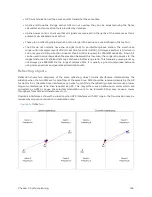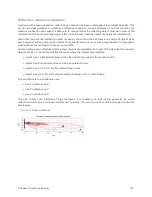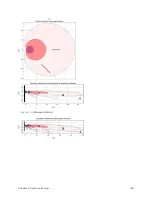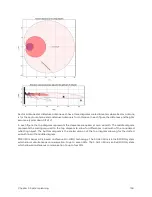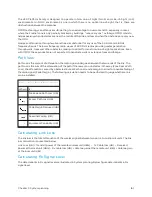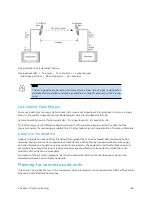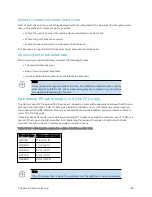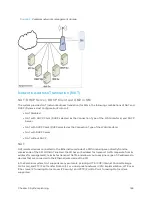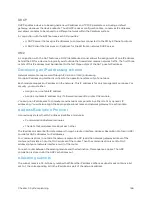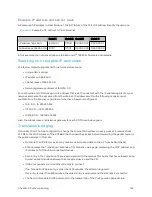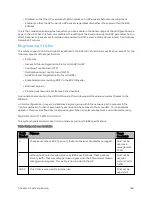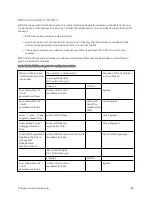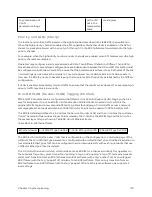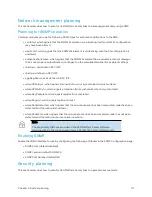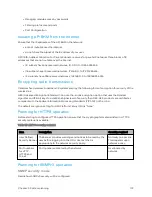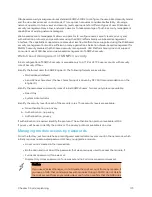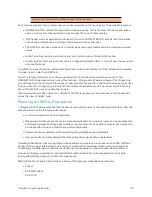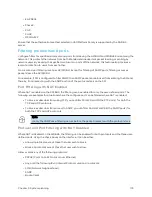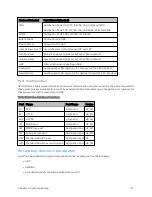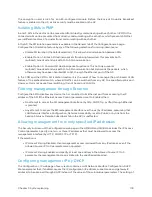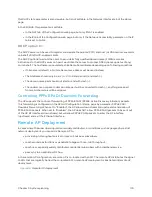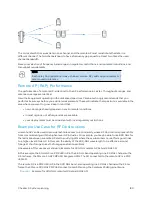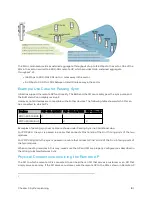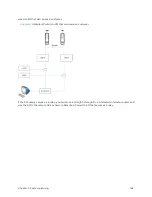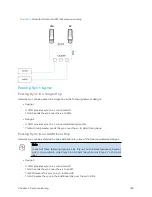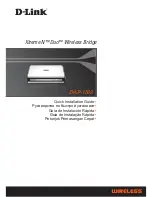
Chapter 3: System planning
168
o
Disabled, so that the AP overwrites the MAC address in ARP packets before forwarding them.
o
Enabled, so that the AP forwards ARP packets regardless of whether it has overwritten the MAC
address.
This is the Translation Bridging feature, which you can enable in the General page of the Configuration web
page in the AP. When this feature is disabled, the setting of the Send Untranslated ARP parameter has no
effect, because all packets are forwarded untranslated (with the source MAC address intact). See Address
Resolution Protocol.
Eng ineer ing VLA Ns
The radios support VLAN functionality as defined in the 802.1Q (Virtual LANs) specification, except for the
following aspects of that specification:
l
Protocols:
o
Generic Attribute Registration Protocol (GARP) GARV
o
Spanning Tree Protocol (STP)
o
Multiple Spanning Tree Protocol (MSTP)
o
GARP Multicast Registration Protocol (GMRP)
l
Embedded source routing (ERIF) in the 802.1Q header
l
Multicast pruning
l
Flooding unknown unicast frames in the downlink
As an additional exception, the AP/BHM does not flood downward the unknown unicast frames to the
SM/BHS.
A VLAN configuration in Layer 2 establishes a logical group within the network. Each computer in the
VLAN, regardless of initial or eventual physical location, has access to the same data. For the network
operator, this provides flexibility in network segmentation, simpler management, and enhanced security.
Special case VLAN numbers
This system handles special case VLAN numbers according to IEEE specifications:
Table 111 :Special case VLAN IDs
VLAN
Number
Purpose
Usage
Constraint
0
These packets have 802.1p priority, but are otherwise handled as untagged.
Must not be
used as a
management
VLAN.
1
Although not noted as special case by IEEE specifications, these packets
identify traffic that was untagged upon ingress into the SM and must remain
untagged upon egress. This policy is hard-coded in the AP.
Must not be
used for
system VLAN
traffic.
4095
This VLAN is reserved for internal use.
Must not be
used at all.
Summary of Contents for PMP 450 Series
Page 92: ...Chapter 2 System hardware 92 Figure 29 MicroPoP Omni antenna implementation pattern Vertical...
Page 134: ...Chapter 3 System planning 134 Figure 51 Mast or tower installation...
Page 135: ...Chapter 3 System planning 135 Figure 52 Wall installation...
Page 136: ...Chapter 3 System planning 136 Figure 53 Roof installation...
Page 137: ...Chapter 3 System planning 137 Figure 54 GPS receiver wall installation...
Page 158: ...Chapter 3 System planning 158 Figure 61 cnMedusa Antenna...



